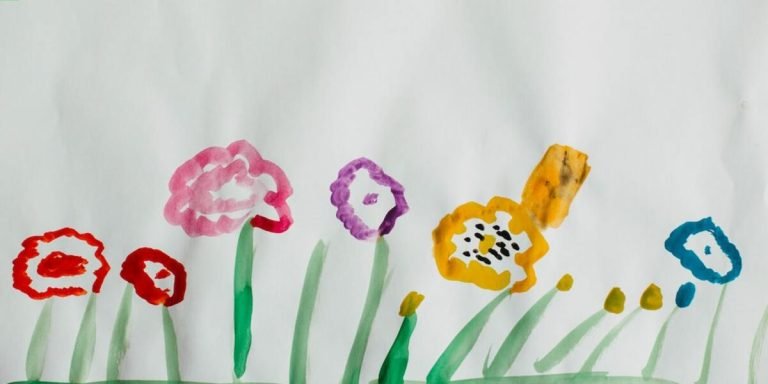Books for Preschoolers: A Guide to the Best Early Learning Literature
The power of well-chosen books for preschoolers can never be overstated. The early learning literature not only instills a love for reading but also plays an instrumental role in fostering cognitive, linguistic and emotional development among children. When selected wisely, books offer the dual advantage of recreation and education.
Understanding this crucial aspect can seem daunting to many parents and educators who may find themselves lost amongst endless options available today. This guide aims to simplify that process by recommending some time-tested classics as well as emerging favorites in children’s literature; all tailored specifically towards promoting comprehensive growth during those formative preschool years.
Did you know?
Did you know? Research by the American Academy of Pediatrics suggests that children who are read to daily from an early age have a larger vocabulary and better math skills than those who aren’t.
The Importance of Age-Appropriate Reading Material for Preschoolers
Choosing age-appropriate books for preschoolers can significantly influence their cognitive development and emotional intelligence. In the early years, children are in a critical phase of learning where narratives help them make sense of the world around them. Reading remains one of the most dynamic ways to instigate curiosity and expand imagination among young learners.
Books specifically designed for preschool-age groups include targeted messages using simple texts accompanied by vibrant illustrations that captivate this demographic’s attention span while enforcing basic language concepts. Such carefully curated reading material aids in vocabulary expansion, enhances comprehension skills, promotes empathy through character understanding, and sets an essential foundation for future academic success – all crucial aspects contributing towards optimal growth during these formative years.
As we shift further into 2023, it becomes more evident that incorporating digital literacy alongside traditional print formats is vital within our rapidly evolving society. Many authors now publish engaging eBooks suitable for little screen users without undermining fundamental educational principles; proving advantageous as parents try to strike a balance between technological exposure and timeless storytelling rituals to equip their children with relevant knowledge tools required today.
How to Select Books that Align with Preschool Cognitive Development
Make an informed pick for preschoolers’ books by aligning them with their cognitive development. Here’s how:
1. **Understand Age Appropriateness**: Knowing what reading materials are appropriate for your child’s age and stage of cognitive development is crucial. Easy-to-read, colourful picture books that convey straightforward messages generally cater well to this age group.
2. **Look for Engaging Themes**: Opt for themes like friendship, family or nature which preschoolers often find engaging as they relate to what children see around them every day.
3. **Interactive Books Are a Bonus**: Pop-up books, lift-the-flap stories or those equipped with sound buttons all add elements of fun interaction while developing fine motor skills.
4. **Focus on Vocabulary Development**: Ideal choices will introduce new words to broaden vocabulary without making it overwhelming.
5? *Repetition Is Key*: Repetition helps reinforce knowledge retention and memorization skills; think about rhythmic language patterns and recurring phrases in the narrative context such as “Green Eggs & Ham” by Dr Seuss.
6? *Reviews Matter*: Reading reviews from other parents who share firsthand experience offers valuable input before purchasing decisions are made.
Encouraging Language and Literacy Skills Through Tailored Book Choices
Choosing suitable books for preschoolers is pivotal in fostering language and literacy skills. It’s not simply about reading any book but selecting the right ones that are age appropriate, engaging, and educational.
Books have a profound influence on children’s linguistic development. With each page turned, they learn new words, phrases as well as tones of expressions which can significantly enhance their vocabulary strength and communication abilities. Just like how we wouldn’t serve adult-size meals to little kids at dinner time; it makes sense also to pick out digestible ‘bite-sized’ learning materials when introducing them into the world of literature.
Picking books with vibrant illustrations help too! Colourful imagery paired closely with simple narratives allows better comprehension while making story-time more fun and interactive!
A good rule thumb: Stick to themes that relate directly or indirectly to your child’s life experiences so far – such as friendship tales set in pre-school environments or bedtime ritual stories narrated through lovable animal characters.
Remember those timeless classics passed around generations (e.g., “The Very Hungry Caterpillar”, “Brown Bear Brown Bear What Do You See”)? They make fantastic options too due their use easy-to-follow storytelling techniques designed specifically for youngsters’ cognitive levels!
Cultivating a Love for Reading in Early Childhood Education
In the landscape of early childhood education, cultivating a love for reading is paramount. One of the most effective tools to arouse this passion are books curated specifically for preschoolers. In 2023, we have an impressive array of these resources at our disposal – captivating storybooks that not only entertain but also educate young minds.
Books designed for preschoolers weave subtle learnings in their narratives which play a huge role in forming their initial understanding about life and relationships while they venture into imaginative worlds painted by words. These stories often come adorned with vibrant illustrations that make them even more engaging and relatable to tiny tots paving way towards building strong literacy foundations.
When children dive into these magical realms through various characters and scenarios, it stimulates curiosity encouraging learning beyond textbooks or traditional teaching methods. Reading books from an early age fosters creativity amongst youngsters as it allows them to envision different situations, interpretations and solutions thereby enriching cognitive development besides instilling empathy through diverse perspectives presented in tales.
Integrating Storytime into Daily Preschool Routines
Creating a daily routine that includes storytime can be an enriching experience in early childhood education. With the right selection of books for preschoolers, educators and parents have the chance to foster not only literacy skills but also stimulate children’s imagination, empathy, and understanding of the world.
Initiating a daily routine with storytime is beneficial. Children are creatures of habit; they thrive on routines as it provides them with security and structure. Integrating reading into their everyday schedule gives them something to look forward to – creating happy associations between books and enjoyment.
Firstly, start by choosing age-appropriate picture books for your preschoolers. Look out for engaging stories around relatable scenarios or fun characters that would pique their curiosity while building vocabulary through exposure to new words.
Next, setting aside time each day will make reading become part of their regular pattern— scheduling this activity at predictable intervals – perhaps after lunch before nap-time could work well.
Thirdly, consider themed-weeks where you choose related texts over consecutive days such as nature week or friendship week providing continuity which improves comprehension in young minds.
Using Picture Books to Engage Pre-Readers
In the journey of early childhood education, picture books play a significant role in cultivating a love for reading. Often, these colorful and engaging tools can be an excellent aid to engage pre-readers efficiently. Let’s look at how we use them effectively.
Firstly, it’s essential to choose appropriate ‘books for preschoolers.’ Do not rush while picking out series or standalone volumes; take your time because this forms their initial impression towards reading— Preferably opt for vibrant illustrations that draw attention instantly and incorporate relatable characters with easy-to-understand narratives.
Interaction is key when using picture books as teaching aids. It becomes more than just passive listening; children observe the images as adults read aloud, linking words with visuals—an effective method imbuing language skills subtly into young minds.
Additionally, frequently revisiting favorite stories builds familiarity that helps improve comprehension over time. So don’t worry if your child insists on hearing about Little Red Riding Hood every night! Repetition has its learning benefits!
Moreover: asking open-ended questions related to the book’s content encourages analytical thinking and verbal expression from even non-verbal kids—it makes them active participants in storytelling sessions instead of being mere listeners.
Strategies for Utilizing Books as Learning Tools in Preschools
In the realm of early childhood education, books serve as powerful tools to spur cognitive development and enhance linguistic skills. Understanding how to effectively utilize them in preschool settings is pivotal for promoting learning outcomes among young children. In our current digital era (2023), while technology continues its rapid advance, traditional literature’s role remains timeless.
One strategic way of using books as learning aids involves integrating stories into everyday lessons or activities. This doesn’t only refer to reading time but can span across all subjects taught at this level – from mathematics to social sciences. For example, a book about animals could inspire an art project or stimulate discussion during science classes on habitats, lending context and tangibility that foster more profound understanding.
Enhancing Vocabulary and Comprehension through Repetitive Reading
Reading has been recognized as a significant component of early childhood education. In particular, the use of books for preschoolers is an excellent strategy to cultivate their vocabulary and comprehension skills through repetitive reading.
The key here lies in repetition – often underestimated yet incredibly potent. It presents preschoolers with consistent exposure to words, phrases, and sentence structures that gradually become familiar over time. With each successive read-through, children can make connections between these elements and their meaning or applications.
Repetitive reading isn’t about merely rehashing the same content; it’s more about using reinforcement techniques strategically embedded within enjoyable narratives which keep young minds engaged while learning simultaneously.
One effective way educators leverage this technique in preschools involves interactive storytelling sessions where students are prompted to predict story outcomes based on context or repeated sequences—making book-reading engaging and educational at once! This method not only fosters cognitive development but also promotes active participation —a win-win situation indeed!
Another equally important aspect focusing on picture cues found abundantly in books designed for toddlers—visual representation acts as memory enhancers making word-recognition quicker when associated with colourful images.
For instance: simple everyday objects like ‘apple’ can be visually reinforced alongside phonetic pronunciation during multiple readings fostering both language acquisition coupled with visual cognition—an essential skill-set necessary beyond academic periphery too!
Interactive Book Activities that Promote Educational Play
- Stimulate your child’s creativity with questions about the story.
- Enhance cognitive abilities by discussing the book’s themes and ideas.
- Foster socio-emotional development through characters’ experiences and emotions.
1. **Book-Based Art Projects**: Children love colors and shapes; they’re the gateway to their imagination. After finishing a storybook with beautiful illustrations, encourage them to recreate scenes or characters using paint, crayons or even clay!
This promotes comprehension skills as they link imagery with information.
2. **Story Dramatization**: Get your little ones moving by turning stories into mini plays! Assign roles based on characters from books for preschoolers sparking active participation and improving social interactions while reinforcing ideas introduced in the narrative.
3.Make use of **Puppetry:** Create simple paper puppets of characters from various children’s literature pieces.They will help illustrate visual details within narratives better making storytelling lively & engaging.This also supports creative exploration & motor skill development.
4.Use 2023 technology: With augmented reality(AR) coming up,,digital storytelling apps offer immersive experiences where kids get actively involved with content through tactile interaction.AR platforms transform static pages into animated landscapes deepening understanding& engagement substantially.
5.Try out **Word Games**: Simple tasks like picking words beginning with each alphabet letter engage auditory learners well.Take turns enacting character dialogues accentuating phonetics awareness & verbal communication.It boosts vocabulary too!
Conclusion
Choosing the right books for preschoolers can be a voyage of discovery, not just for your little one but also for you as parents or mentors. It’s an opportunity to tune into their interests, stoke their curiosity and spark intelligent conversations that ultimately lay strong educational foundations.
So don’t stop here! Browse around our website for more insights on childhood education and support resources curated specifically with parents and educators in mind. Remember – every day holds the potential to open a new chapter of learning when we have the power of good literature on our side.







